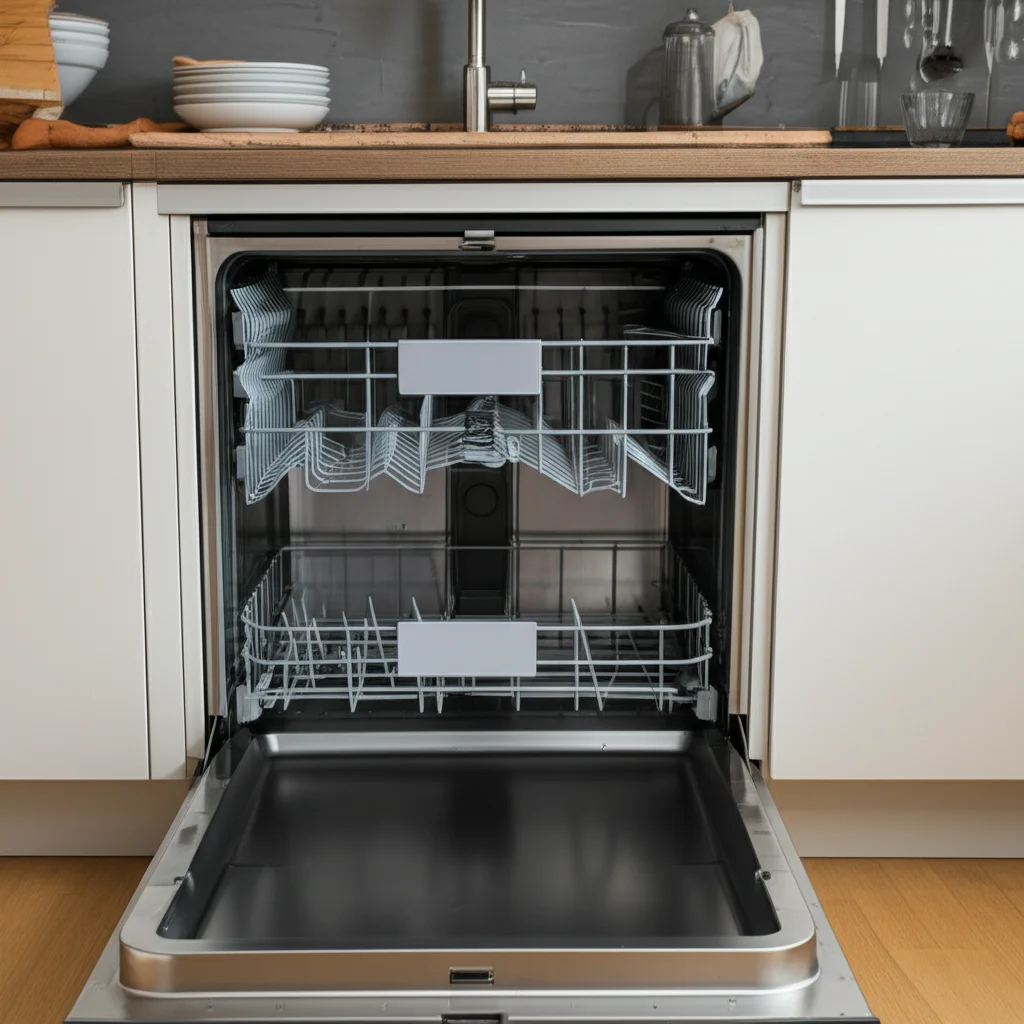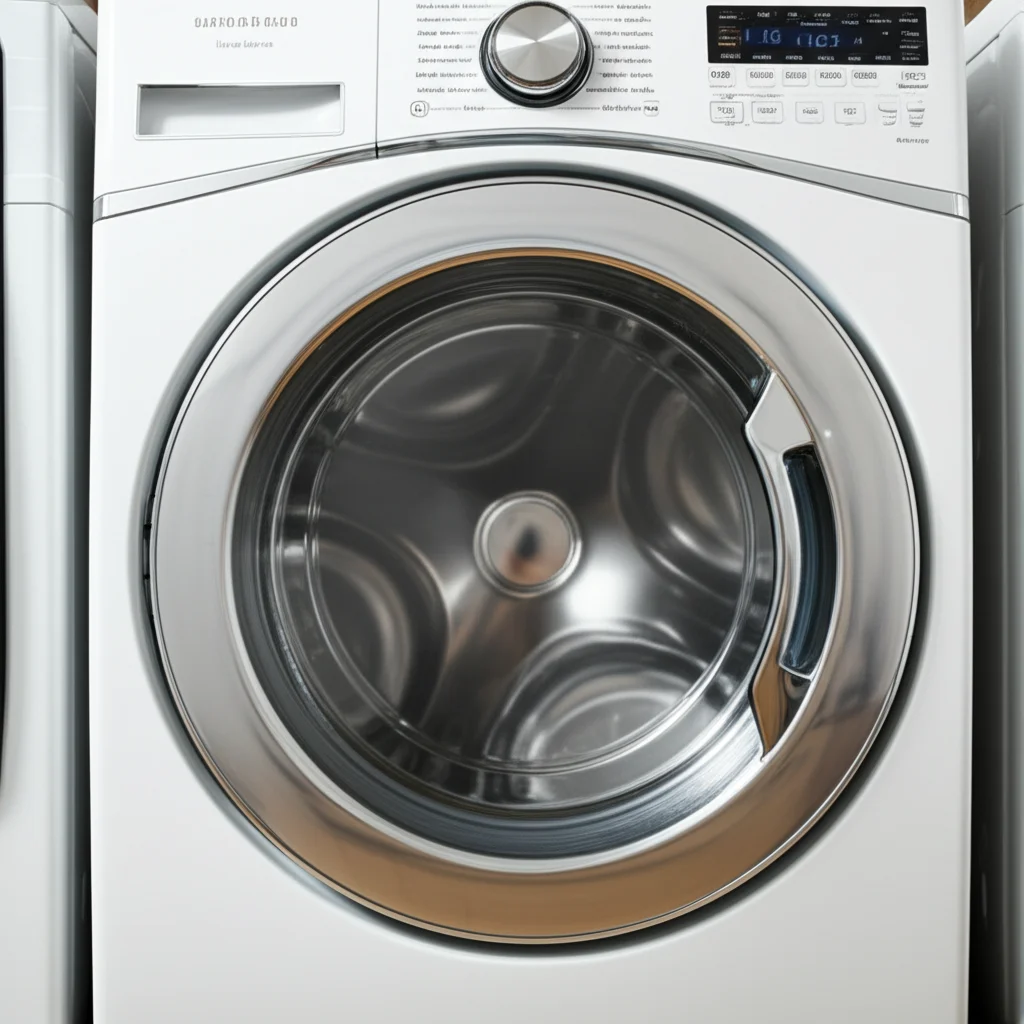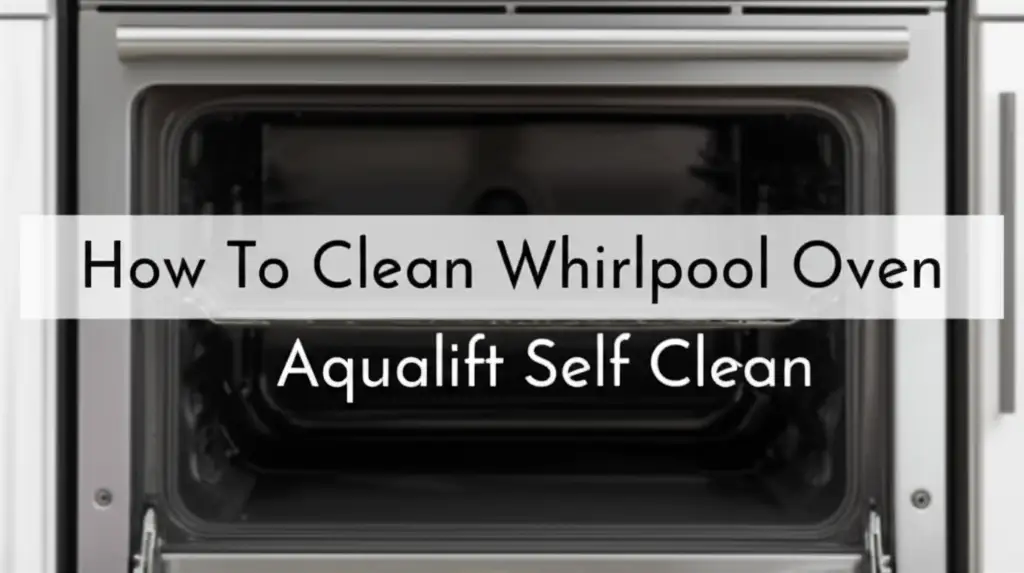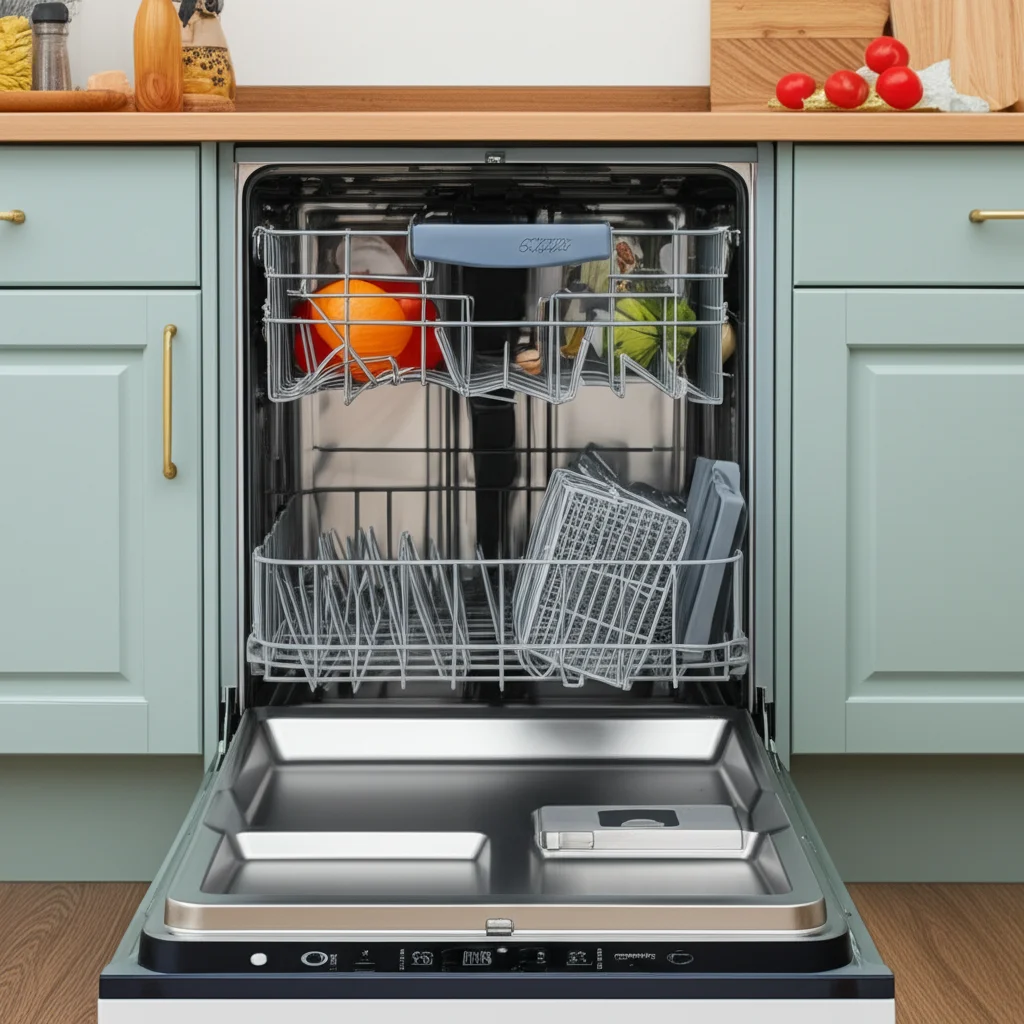· Todd Martin · Appliance Maintenance · 20 min read
How To Clean Filter In Old Ge Dishwasher
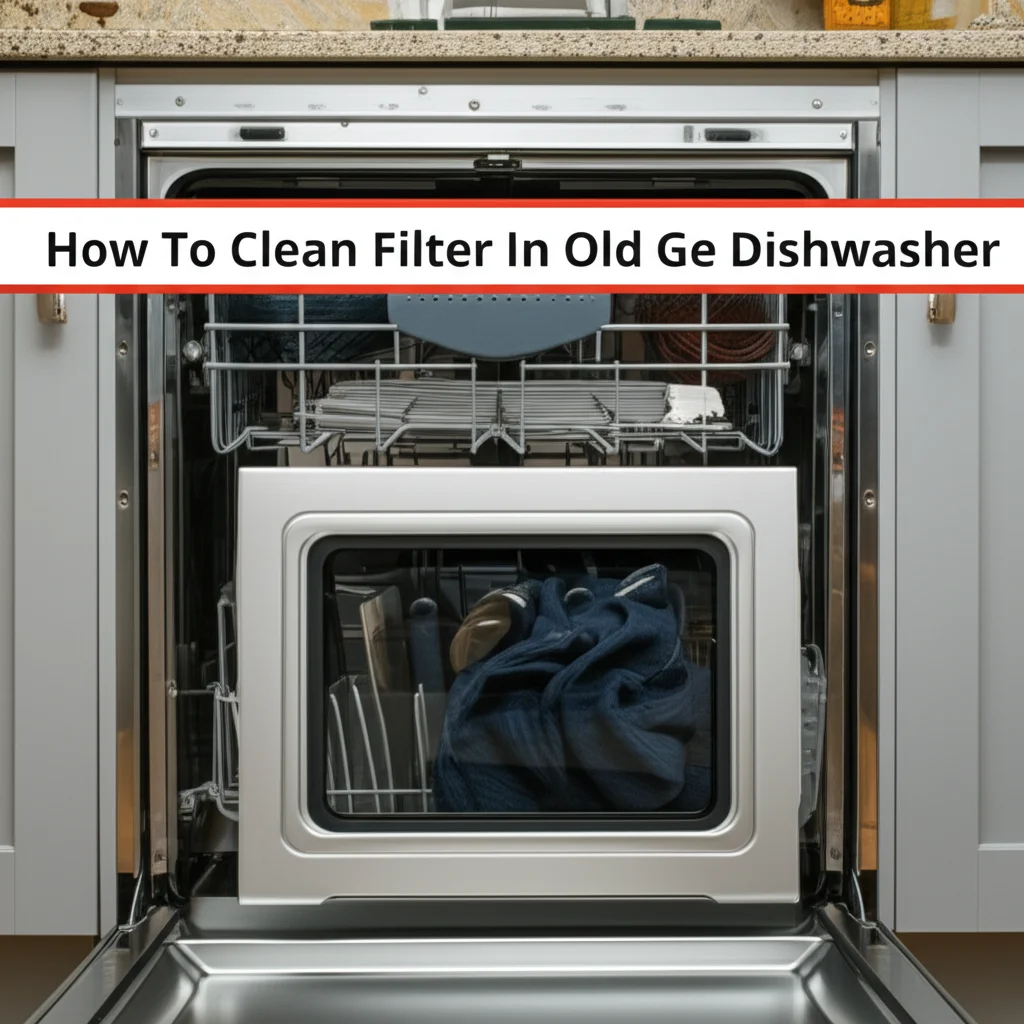
Restore Shine: Clean Your Old GE Dishwasher Filter
Do your dishes still look dirty after a wash cycle? Does your kitchen smell stale when the dishwasher runs? The problem might be a clogged filter. Many older GE dishwashers rely on a manual filter system. This filter catches food particles and debris. Over time, it gets dirty and impacts performance. Knowing how to clean the filter in your old GE dishwasher is essential for sparkling clean dishes and a fresh-smelling kitchen. This guide will walk you through each step. I will cover everything from locating the filter to maintaining its cleanliness.
Takeaway:
- Regularly cleaning your GE dishwasher filter prevents dirty dishes and bad smells.
- Locate the filter at the bottom of the dishwasher tub.
- Remove the filter carefully, then wash it with soap and warm water.
- Reinstall the filter properly to ensure good dishwasher performance.
Cleaning the filter in your old GE dishwasher involves locating the filter, typically at the bottom of the wash tub, twisting or unlatching it to remove it, and then washing it thoroughly under warm running water with dish soap and a soft brush to remove food particles and grease. Rinse well and reinstall.
Why Your Old GE Dishwasher Filter Needs Cleaning
You might wonder why your dishes are not as clean as they used to be. Or perhaps a strange smell comes from your appliance. These are clear signs your GE dishwasher filter needs attention. This small component plays a huge role in your dishwasher’s effectiveness. It traps food scraps and prevents them from recirculating onto your dishes.
Older GE dishwasher models often have a manual filter that requires regular cleaning. Unlike some newer models with self-cleaning filters, these older units need your direct intervention. If the filter is left dirty, trapped food particles break down. This creates unpleasant odors and leaves residue on your dishes. I have noticed this firsthand in my own home. When the filter is clean, my dishes always come out spotless. Neglecting this simple task leads to cloudy glassware and grimy plates.
A clogged filter can also put extra strain on your dishwasher’s pump. This can lead to decreased water pressure and inefficient cleaning. Over time, this could even shorten the lifespan of your appliance. Regularly cleaning the filter protects your dishes and your dishwasher. It ensures your old GE dishwasher continues to work efficiently. You can learn more about general filter cleaning in dishwashers by visiting our guide on how to clean filter in dishwasher. This practice is a simple yet powerful way to maintain your kitchen’s central cleaning hub. It prevents common issues like a smelly GE dishwasher.
Keeping the filter clean improves the machine’s performance. It also helps avoid costly repairs down the line. A clean filter means better drainage. It also means less chance of food particles clinging to your dishes. I make sure to check my filter every few weeks. This quick check saves me time and effort in the long run. It also keeps my dishes perfectly clean after every wash cycle.
Locating the Filter in Your Old GE Dishwasher
Finding the filter in your old GE dishwasher is usually straightforward. Most GE dishwashers, especially older models, place the filter at the bottom of the wash tub. This location makes sense, as water drains through it, trapping debris. When you open the dishwasher door, look down at the bottom spraying arm. The filter system is typically located directly underneath or around this area.
GE dishwashers often use a two-part filter system. This usually includes a coarse filter and a fine filter. The coarse filter is a larger cup-like component. It catches bigger food particles. The fine filter is a mesh screen. It filters out smaller debris. These components work together to ensure water cleanliness. Knowing these parts helps in effective cleaning. It ensures you do not miss any part of the filtration system.
To locate it, first, ensure the dishwasher is empty. Remove the bottom dish rack. This gives you full access to the bottom of the tub. You will see a cylindrical component in the center or a flat mesh screen. Some older models might have a single, removable cylindrical filter. Others have a separate flat mesh plate. Identifying your specific filter type is important. It helps you remove it correctly. Some filters twist to unlock, while others lift straight up.
I remember the first time I tried to find my GE dishwasher filter. I thought it would be hidden. But once I removed the bottom rack, it was right there. It was easy to spot once I knew what to look for. Always check your dishwasher’s user manual if you are unsure. It will show the exact location and removal method for your specific model. This step is crucial before you start cleaning. Properly identifying and removing the filter prevents any damage to the appliance.
The fine mesh filter might be a flat screen that covers the entire sump area. The coarse filter often sits in the middle of this screen. It might be a cylindrical shape. Both parts need your attention during cleaning. They work in tandem to keep your dishes spotless. Always handle these parts with care. They are vital for your dishwasher’s performance.
Essential Tools and Supplies for Filter Cleaning
Before you start cleaning your old GE dishwasher filter, gather all necessary tools and supplies. Having everything ready makes the process smoother and more efficient. You will not need many items. The items you need are likely already in your home. I always lay everything out before I begin. This saves time and prevents interruptions.
Here is a list of what you will need:
- Dish Soap: A small amount of regular dish soap is perfect for cutting through grease and grime.
- Warm Water: You will use this for rinsing and cleaning the filter components.
- Soft Brush: An old toothbrush or a small cleaning brush works great. It helps scrub away stubborn food particles. Make sure it has soft bristles to avoid scratching the filter.
- Microfiber Cloth or Towel: For drying the components and wiping down the surrounding area.
- Rubber Gloves (Optional): If you prefer not to touch the grime, gloves offer protection.
- Small Bucket or Basin (Optional): Useful if you want to soak the filter in a cleaning solution.
Safety is important when working with any appliance. Always make sure your dishwasher is off and unplugged before you reach inside. This prevents accidental starts. Although cleaning the filter does not involve electricity directly, it is a good habit. You should always ensure the machine is not running. This keeps you safe during the cleaning process.
Using a soft brush is key. You want to remove debris without damaging the delicate mesh of the filter. A stiff brush could tear or deform the filter. This would compromise its ability to trap food particles. I use an old toothbrush dedicated only for this purpose. It fits into small crevices and cleans thoroughly.
Some people like to use a small bowl filled with warm, soapy water for soaking. This can help loosen particularly stubborn buildup before scrubbing. I find this especially helpful if the filter has not been cleaned in a long time. It makes the scrubbing part much easier. After soaking, the grime just wipes away. Always have a designated area for the dirty parts. This keeps your workspace clean.
Step-by-Step Guide: Cleaning Your Old GE Dishwasher Filter
Now that you know why and what you need, let’s go through the steps to clean your old GE dishwasher filter. This process is simple but requires a bit of care. Follow these instructions precisely for the best results. I find breaking it down into small steps makes it less daunting.
1. Prepare Your Dishwasher: * First, open your dishwasher door. * Make sure the dishwasher is empty of all dishes and racks. * Pull out the bottom dish rack completely. This gives you clear access to the bottom of the tub where the filter is located. * It is always a good idea to disconnect the power to the dishwasher before doing any internal maintenance. This ensures safety.
2. Remove the Coarse Filter: * Look for the large cylindrical filter, usually in the center of the sump area. * For most old GE models, you will simply twist the handle of the coarse filter counter-clockwise. It should unlock and lift straight up. * Some models might have clips or latches instead of a twist mechanism. Gently release these if present. Handle it carefully to avoid spilling debris inside the tub.
3. Remove the Fine Mesh Filter: * Once the coarse filter is out, you will see a flat, usually round or rectangular, mesh screen underneath. This is the fine filter. * This mesh screen typically lifts straight out. Some models might require you to gently pry it up with your fingers. Be careful not to bend or damage the mesh. * Sometimes, the fine mesh filter might be integrated with the coarse filter. If so, both will come out as one unit.
4. Clean the Filter Components: * Take both filter parts to your sink. * Rinse them under warm running water. You will see a lot of food particles, grease, and grime wash away. * Apply a few drops of dish soap to each filter component. * Using your soft brush (like an old toothbrush), gently scrub all surfaces of both filters. Pay special attention to the mesh screens and the inside of the coarse filter where debris accumulates. * Ensure you remove all visible food particles and greasy residue. For stubborn spots, you can let the filters soak in warm soapy water for a few minutes. This can help loosen stuck-on grime. * I often find bits of rice or small seeds caught in the mesh. A thorough scrub gets them out.
5. Rinse Thoroughly: * Rinse both filter components under clean, warm running water. * Make sure no soap residue remains. Soap residue can create suds in your dishwasher. * Shake off excess water. You can also gently pat them dry with a clean towel.
6. Reinstall the Filters: * Place the fine mesh filter back into its slot at the bottom of the dishwasher tub. Ensure it sits flat and correctly. * Next, insert the coarse cylindrical filter. Align the notches or tabs, then twist it clockwise until it locks securely into place. You should feel it click or stop firmly. * Ensure both filters are seated properly. A loose filter can cause issues. * Return the bottom dish rack to its position.
This simple cleaning process takes only a few minutes. It can significantly improve your dishwasher’s performance. For a broader understanding of how to maintain cleanliness across your entire appliance, consider checking out our guide on how to clean the inside of a dishwasher. This ensures no part of your appliance is overlooked.
Dealing with Stubborn Buildup and Odors
Sometimes, a regular scrub might not be enough. If your old GE dishwasher filter has been neglected for a long time, you might face stubborn buildup or persistent odors. These issues require a more aggressive cleaning approach. I have dealt with this many times. It is satisfying to see the difference a deep clean makes.
Tackling Stubborn Buildup:
- Soaking is Key: If scrubbing doesn’t work, let the filter components soak. Fill a basin with hot water and a generous amount of dish soap. Submerge the coarse and fine filters for 30 minutes to an hour. For very tough grime, you can even leave them overnight. The hot, soapy water helps dissolve grease and loosen dried food particles.
- Vinegar Soak: White vinegar is an excellent natural degreaser and disinfectant. After your initial soap soak, you can transfer the filters to a bowl with equal parts white vinegar and warm water. Let them soak for another 15-30 minutes. This helps break down mineral deposits and hard water stains. You can learn more about using vinegar to clean your dishwasher by reading how to clean dishwasher with vinegar.
- Baking Soda Paste: For caked-on residue, make a paste with baking soda and a little water. Apply the paste directly to the affected areas of the filter. Let it sit for 10-15 minutes before scrubbing with your soft brush. Baking soda is mildly abrasive and helps scour away tough grime without scratching.
Eliminating Persistent Odors:
- Beyond the Filter: A smelly dishwasher often points to a dirty filter. But odors can also come from other parts of the dishwasher. Mold and mildew can grow in damp, dark areas. Check the spray arms and the gasket around the door. These areas can trap food and moisture. Cleaning these spots will help eliminate the smell. You can find useful tips on this subject by checking out how to clean a smelly dishwasher.
- Dishwasher Deodorizers: After cleaning, you can use dishwasher deodorizers. These small items hang on the rack. They release a fresh scent during cycles. They are a temporary fix. They do not replace regular cleaning.
- Regular Maintenance Washes: Running an empty dishwasher cycle with vinegar or baking soda can also help. Place a cup of white vinegar in a top-rack safe bowl. Run a hot wash cycle. Alternatively, sprinkle a cup of baking soda on the bottom of the tub and run a short, hot cycle. This helps neutralize odors and clean the internal components. For a complete deep clean, consider our guide on how to deep clean a dishwasher.
Remember, addressing odors means tackling the source. A clean filter is the first step. But looking at the entire dishwasher ensures a truly fresh machine. I always follow up a filter clean with a quick wipe down of the door gasket. This ensures no hidden grime is left behind.
Maintenance Tips for Your Old GE Dishwasher
Cleaning the filter is a vital part of maintaining your old GE dishwasher. But it is just one piece of the puzzle. Regular, overall maintenance keeps your appliance running smoothly for years. It helps prevent future issues and ensures consistent cleaning results. I have found that a little consistent effort goes a long way.
1. Scrape Dishes Before Loading:
- This is the simplest yet most effective tip. Scrape large food particles off plates and bowls before loading them into the dishwasher.
- You do not need to pre-rinse, but removing solids prevents them from ending up in your filter or clogging the drain. This significantly reduces the amount of debris your filter has to catch.
2. Regular Filter Cleaning Schedule:
- How often should you clean your filter? It depends on your usage.
- For daily use, aim to check your filter weekly and clean it thoroughly every 2-4 weeks.
- If you use your dishwasher less frequently, once a month might be sufficient. If you notice dishes are not clean or smells arise, check it sooner.
3. Use the Right Detergent and Rinse Aid:
- Using good quality dishwasher detergent is important. It helps break down food and grease effectively.
- Rinse aid is not just for spot-free dishes. It also helps water sheet off surfaces. This prevents water spots and can help keep food particles from sticking.
- Do not use too much detergent. This can leave a residue on dishes and even in the dishwasher itself.
4. Perform Monthly Deep Cleans:
- Beyond the filter, the entire dishwasher needs a deep clean.
- Run an empty cycle with a dishwasher cleaner, white vinegar, or baking soda.
- To use vinegar: Place a cup of white vinegar in an upright, top-rack safe bowl. Run a hot cycle.
- To use baking soda: Sprinkle a cup of baking soda on the bottom of the empty tub. Run a short, hot wash.
- These deep cleans remove mineral buildup, grease, and odors from the internal components. You can learn more about maintaining good drainage in your appliance by visiting how to clean dishwasher drain.
5. Clean Spray Arms and Gaskets:
- Periodically check the spray arms for clogged holes. Food particles can get stuck in them. Use a toothpick or small wire to clear any blockages.
- Wipe down the door gasket (the rubber seal around the door) regularly. Food and mold can accumulate there, leading to odors and leaks. A damp cloth with a little dish soap works well.
6. Avoid Overloading:
- Overloading your dishwasher can prevent water and detergent from reaching all dishes. This leads to poor cleaning and can leave more food debris circulating.
- Ensure proper spacing between dishes. This allows water to flow freely.
By following these maintenance tips, you will extend the life of your old GE dishwasher. You will keep it running at peak performance. These simple habits prevent common issues. They also ensure your dishes come out sparkling clean every time. I find that consistent attention to these details saves me headaches and money in the long run.
Troubleshooting Common Dishwasher Issues Related to the Filter
A dirty or clogged filter is a common culprit for many dishwasher problems. If you have cleaned your filter but are still experiencing issues, it is worth looking at filter-related problems. Here are some common issues and how they relate to the filter, along with solutions. I have encountered these problems myself. Knowing the connection to the filter helps in quick troubleshooting.
1. Dishes Not Getting Clean:
- Symptom: Food particles remain on dishes, or they come out cloudy/grimy.
- Filter Connection: A clogged fine mesh filter prevents proper water circulation. Water cannot effectively wash dishes. It also traps dirty water that gets recirculated.
- Solution: Ensure the filter is spotlessly clean. Check for any remaining debris after cleaning. Also, ensure the coarse filter is securely locked in place. If it is loose, dirty water can bypass the filter.
- Further Check: Examine the spray arms. Small holes in the spray arms can become clogged with debris. Use a toothpick or small wire to clear these.
2. Water Not Draining Properly:
- Symptom: Water pools at the bottom of the dishwasher tub after a cycle.
- Filter Connection: A severely clogged filter can slow down or block water flow to the drain pump. It can also cause a backup of dirty water.
- Solution: Thoroughly clean both the coarse and fine filters. Ensure no large food particles are blocking the drain opening beneath the filter assembly.
- Further Check: If the filter is clean, the issue might be with the dishwasher drain hose or the drain pump itself. Sometimes, a piece of food or a foreign object can block the drain hose. Learn more about how to ensure proper drainage by checking our article on how to get the dishwasher to drain.
3. Loud Noises During Operation:
- Symptom: Grinding, humming, or vibrating noises during wash cycles.
- Filter Connection: Large food debris trapped in the filter can interfere with the spray arm’s rotation. If the filter is loose, it might vibrate. More seriously, a clogged filter can put strain on the circulation or drain pump, leading to unusual noises.
- Solution: Securely re-seat the filter assembly. Check if any large, hard objects (like broken glass or cutlery) have fallen into the sump area, bypassing the filter. Remove them carefully.
- Further Check: If noises persist after filter check, the problem might be with the wash pump or drain pump. These may need professional attention.
4. Unpleasant Odors:
- Symptom: A sour or stale smell coming from the dishwasher.
- Filter Connection: Trapped food particles in a dirty filter decompose. This creates strong, unpleasant smells that permeate the dishwasher and kitchen.
- Solution: Clean the filter rigorously. Soak it if necessary to remove all residue. Follow up with a deep cleaning cycle using vinegar or baking soda.
- Further Check: Regularly wipe down the door seal and edges of the tub. Mold and mildew can grow in these areas, causing odors. You can also explore our guide on how to clean mold in dishwasher if mold is the source.
By understanding the relationship between the filter and these common issues, you can often diagnose and fix problems yourself. I always start with the filter when a problem arises. It is the easiest and most frequent culprit. This saves time and money on service calls. If a clean filter does not solve the problem, then you can look at other components of the dishwasher.
FAQ Section
Q1: How often should I clean the filter in my old GE dishwasher? A1: I recommend checking your filter weekly if you use your dishwasher daily. A thorough cleaning should happen every 2 to 4 weeks. If you notice dirty dishes or bad smells, clean it sooner. This regular maintenance prevents stubborn buildup and ensures your dishes get properly cleaned. It is a quick task that makes a big difference.
Q2: What are the signs of a clogged GE dishwasher filter? A2: Common signs include dishes not coming out clean, often with food particles or gritty residue. You might also notice unpleasant odors coming from the dishwasher. A humming sound during the cycle or water pooling at the bottom of the tub can also indicate a clogged filter. These are your dishwasher’s ways of telling you it needs attention.
Q3: Can I put my dishwasher filter in the washing machine or dishwasher to clean it? A3: No, you should not put your dishwasher filter in the washing machine or dishwasher. The filter is designed to be hand-washed. It needs gentle scrubbing to remove trapped food particles. A machine wash can damage the delicate mesh. It might not remove all debris effectively. Always clean it by hand under warm running water.
Q4: What if the filter is still dirty after cleaning with soap and water? A4: For stubborn buildup, try soaking the filter. Place it in a basin with hot, soapy water for 30 minutes to an hour. You can also use a solution of equal parts white vinegar and warm water. A baking soda paste can help with caked-on grime. Gently scrub again after soaking. This often breaks down tougher grease and food residue.
Q5: My old GE dishwasher still smells after cleaning the filter. What else can I do? A5: A smelly dishwasher can have multiple causes. After cleaning the filter, check the door gasket for mold or food buildup. Clean the spray arm holes. Run an empty, hot cycle with a cup of white vinegar or baking soda placed in a top-rack safe bowl or sprinkled on the bottom. This helps sanitize the entire interior and removes lingering odors.
Q6: Is it safe to use bleach to clean my GE dishwasher filter? A6: I do not recommend using bleach to clean your dishwasher filter. Bleach can be harsh on plastic and rubber components. It might also react with leftover food particles, creating harmful fumes. Stick to dish soap, white vinegar, and baking soda for safe and effective cleaning. These natural solutions work very well without harsh chemicals.
Conclusion
Keeping your old GE dishwasher filter clean is a simple yet essential task. It directly impacts your dishwasher’s performance and the cleanliness of your dishes. We have covered why this maintenance is crucial, how to find your filter, and the step-by-step process to clean it effectively. From removing stubborn grime to tackling lingering odors, you now have the knowledge to keep your appliance running smoothly.
Regular cleaning prevents frustrating issues like dirty dishes and unpleasant smells. By dedicating a few minutes every few weeks, you extend the life of your GE dishwasher. You ensure it operates at its best for years to come. Remember, a clean filter is the cornerstone of a sparkling clean dishwasher. Do not overlook this small but mighty component. Take action today. Give your old GE dishwasher the attention it deserves. Your dishes, and your nose, will thank you for it! Start your regular cleaning routine now. You will enjoy spotlessly clean dishes with every wash.


